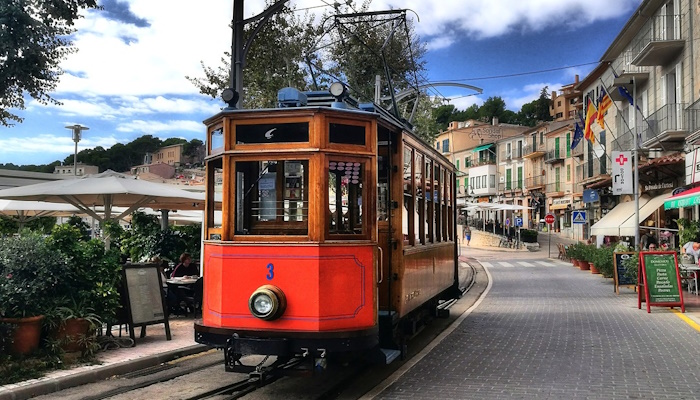Mallorca, the largest of the Balearic Islands, is a fascinating destination with a rich and complex history. From prehistoric settlement to its modern role as a tourist paradise, the island has undergone an impressive evolution. In this article, we take a look at the most important historical periods and events that have shaped Mallorca.
Prehistoric settlement (ca. 4000–1200 BC)
The first settlers on Mallorca probably came from the Mediterranean and settled here in the Neolithic period. They lived as hunters and gatherers, and later as farmers. Evidence of this era is the talaiots, megalithic stone buildings that can be found scattered around the island. These monuments probably served as homes, burial sites or watchtowers.
The Phoenicians and Carthaginians (ca. 8th–2nd century BC)
Over time, Mallorca became an important hub for trade in the Mediterranean. The Phoenicians, a seafaring people, took advantage of the island’s strategic location. Later, the Carthaginians took control. The island’s coasts offered protection to ships transporting goods such as salt, metals and ceramics.
Roman rule (123 BC–455 AD)
In 123 BC, the Romans conquered Mallorca. In 450 BC, the Roman general Quintus Caecilius Metellus conquered the Balearic Islands. Under Roman rule, Mallorca developed into an important trading and agricultural center. Cities such as Pollentia (now Alcudia) were founded, the ruins of which can still be visited. The Romans built roads, aqueducts and temples, which had a lasting impact on the island’s infrastructure.
The Vandals and the Byzantine Empire (455–902)
After the collapse of the Roman Empire, Mallorca was conquered by the Vandals. This period was characterized by looting and instability. Later, in 534, the island became part of the Byzantine Empire. The Byzantines brought Christianity to the island and built the first churches.
The Moors (902–1229)
One of Mallorca’s most formative eras began in 902, when the Moors conquered the island and incorporated it into their Caliphate of Córdoba. Under Moorish rule, the island flourished culturally and economically. The Moors introduced advanced irrigation systems that allowed the cultivation of olives, almonds and figs. The capital, Medina Mayurqa (now Palma), developed into a vibrant commercial centre.
The Christian Conquest (1229–1343)
In 1229, King Jaume I of Aragon launched a large-scale conquest of Mallorca. After months of fighting, the island fell into Christian hands and the Moors were expelled. Palma became the capital of the newly founded Kingdom of Mallorca. The Gothic cathedral of La Seu, one of the island’s most famous landmarks, was built during this period.
The Kingdom of Mallorca (1276–1349)
For a brief period, Mallorca was an independent kingdom under the Crown of Aragon. However, this independence ended in 1349 when the island was integrated into the Kingdom of Aragon. During this period, trade flourished and the city of Palma continued to grow.
The pirate attacks and the fortification of the island (15th-17th centuries)
Between the 15th and 17th centuries, Mallorca suffered frequent attacks by pirates from North Africa. To protect themselves, numerous watchtowers and fortifications were built along the coasts, which have survived to this day. At the same time, social and economic upheavals occurred, including the introduction of new farming methods.
The incorporation into Spain (18th century)
During the War of the Spanish Succession (1701-1714), Mallorca was finally incorporated into the Kingdom of Spain. The island benefited from the Bourbon reforms, which promoted trade and agriculture.
Modernity: Tourism and Transformation (19th and 20th centuries)
In the 19th century, Mallorca began to establish itself as a destination for European artists and intellectuals. Personalities such as Frederic Chopin and George Sand visited the island and made it famous in Europe.
Mass tourism began in the 1950s, when cheap flights and the development of infrastructure made the island attractive to international holidaymakers. Hotels, restaurants and holiday resorts sprung up, and Mallorca developed into one of the most popular destinations in the Mediterranean.
Mallorca today
Today, Mallorca is a fascinating mix of tradition and modernity. While the island continues to attract millions of tourists, it retains its cultural roots. Historic cities such as Palma, charming villages such as Valldemossa and the impressive landscape of the Serra de Tramuntana make the island a unique place where history meets the present.
Conclusion
The history of Mallorca is as multifaceted as the island itself. From prehistoric settlement to the Moorish heyday to the modern tourism industry, each section reflects the importance of Mallorca as a cultural and economic hub in the Mediterranean. A visit to Mallorca is not just a trip to the sun, but also a journey through time.
Map of Mallorca

